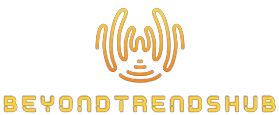The Basics of Go Programming
Go, often referred to as Golang, is an open-source programming language developed by Google. Created in 2007 by Robert Griesemer, Rob Pike, and Ken Thompson, Go was officially announced in 2009. It was designed to address some of the challenges faced by developers using other programming languages, particularly in the realm of system-level programming.
Here’s a brief overview of Go’s features:
| Feature | Description |
|---|---|
| Simplicity | Go is designed to be simple and concise. It avoids complex features like inheritance, method overloading, and annotations. |
| Performance | It offers fast compilation and execution, making it suitable for performance-critical applications. |
| Concurrency | Go has built-in support for concurrent programming, making it efficient in handling multiple tasks at the same time. |
| Garbage Collection | Automatic memory management allows developers to focus on writing code without worrying about allocation and deallocation. |
| Rich Standard Library | Go comes with an extensive standard library that supports various tasks such as web development, cryptography, and I/O operations. |
Core Concepts of Go Programming
To get started with Go, it’s crucial to understand some key concepts:
1. Packages
Packages are the fundamental components of a Go program. Every Go program comprises packages. The ‘main’ package is the starting point of the program.
package mainimport "fmt"func main() { fmt.Println("Hello, World!")}2. Variables
In Go, variables are explicitly declared and used to store data. Variables can be defined using the ‘var’ keyword or the ‘:=’ shorthand.
var age int = 30name := "John"3. Functions
Functions are reusable blocks of code designed to perform a specific task. They are defined using the ‘func’ keyword.
func add(x int, y int) int { return x + y}4. Control Structures
Go offers several control structures such as if-else, for loops, and switch statements for flow control.
if age > 18 { fmt.Println("Adult") } else { fmt.Println("Minor")}for i := 0; i < 10; i++ { fmt.Println(i) }switch day { case "Monday": fmt.Println("Start of work week") case "Friday": fmt.Println("End of work week") default: fmt.Println("Midweek")}5. Error Handling
Go approaches error handling by encouraging explicit error checking over exception handling.
result, err := divide(4, 0)if err != nil { fmt.Println("Error:", err)}6. Goroutines
Goroutines are lightweight threads managed by the Go runtime. They are pivotal in achieving concurrency.
go sayHello()func sayHello() { fmt.Println("Hello") }7. Channels
Channels are used to communicate between goroutines. They provide a way to pass data safely.
ch := make(chan int)go func() { ch <- 42 }()value := <-chBasic Syntax
1. Hello World
The following is a simple Hello World program in Go:
package mainimport "fmt"func main() { fmt.Println("Hello, World!")}2. Data Types
Go includes several data types. Some basic ones are:
- int: for integers
- float64: for floating point numbers
- string: for strings
- bool: for booleans
3. Arrays and Slices
Arrays are fixed-size collections, while slices are dynamically-sized.
arr := [3]int{1, 2, 3}sli := []int{4, 5, 6}4. Maps
Maps are key-value data structures.
m := make(map[string]int)m["one"] = 1Conclusion
Go, with its simplicity, performance, and robust concurrency support, is a powerful language for modern programming needs. By mastering its basics such as packages, variables, functions, and goroutines, developers can build effective and efficient applications. While this article covers the core concepts, practicing these fundamentals will help in gaining deeper insights and proficiency in Go programming.
